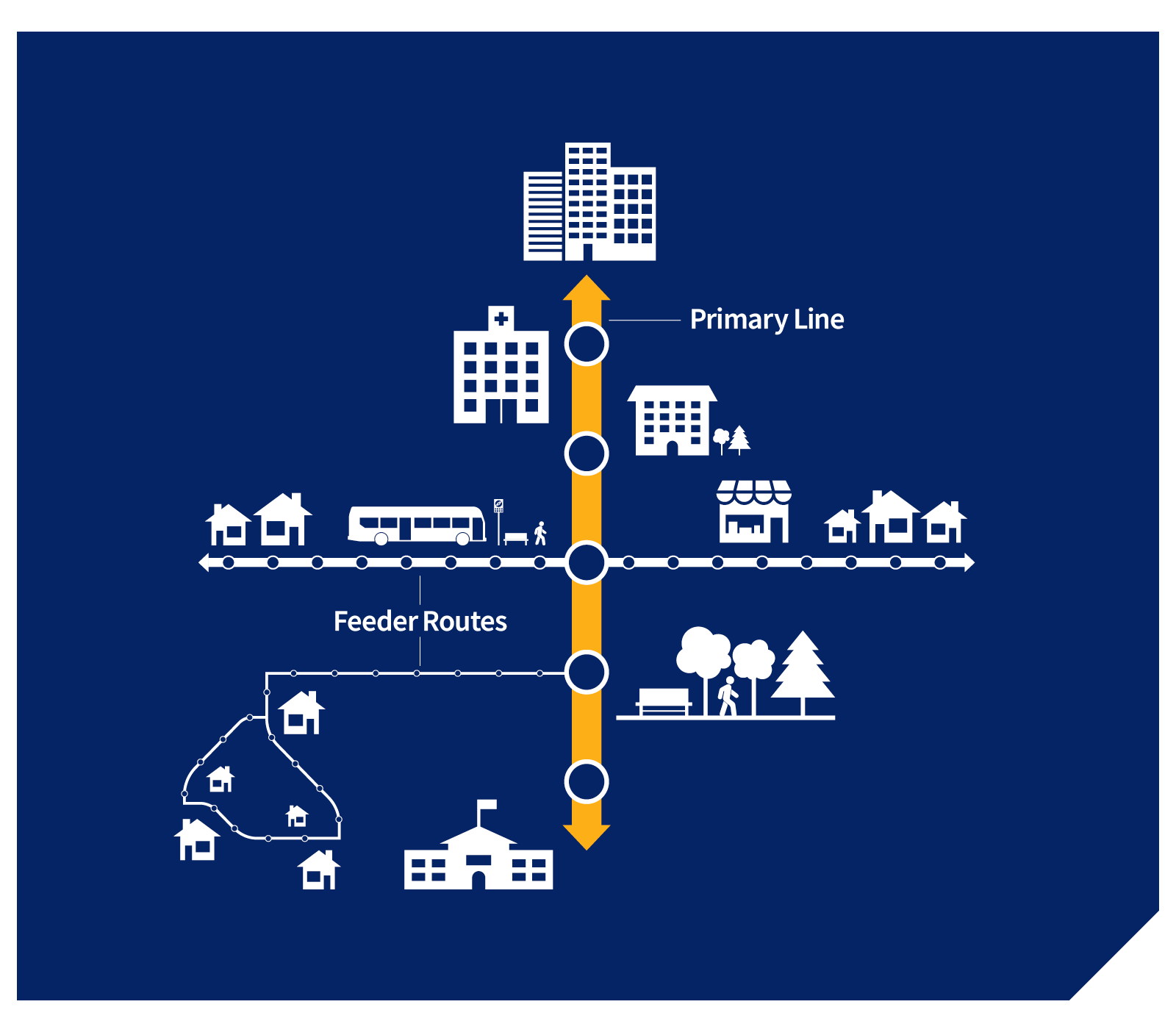
Winnipeg Transit is gearing up to transform its route network in 2025. Residents are invited to get to know the proposed plan before it is finalized.
“When we released the Winnipeg Transit Master Plan in 2021, people had some misconceptions. Some said things like it would take 25 years for anything significant to change,” says Kevin Sturgeon, Senior Transit Planner, Winnipeg Transit. “But we always had a short-term network plan in place to transform bus service in Winnipeg."
We expect it will improve things city-wide when we launch. More residents than ever will have access to frequent service."
The new network includes a Primary Transit Network and a network of community feeder routes. The Primary Transit Network act as the spines of the system. It’s made up of frequent and direct bus ‘lines’ with fewer stops. Meanwhile, feeder routes carry passengers throughout communities and connect to the spine. The entire system is more like a grid, meaning Winnipeggers can look forward to more efficient bus trips.
Only Primary Transit Network Lines go downtown. That means routes with less frequent service avoid the worst traffic congestion, keeping them on schedule. The routes that do go downtown come often enough that the impact of a late bus is minimal.
Southwest Winnipeg went through a similar change in 2020 with the opening of the Blue Rapid Transit Line and its feeder routes. Now, it’s the rest of Winnipeg’s turn.
“We want people to take a close look at the system map. Especially in their communities, or other areas they bus to,” says Sturgeon. “Look at the routes that serve where you want to go.
“We’re going to bring a big version of the map to public information events throughout Winnipeg. If people can’t make it in person, they can check it out online.”
More information about the Primary Transit Network and its feeder routes is available on winnipeg.ca/primarytransitnetwork.
